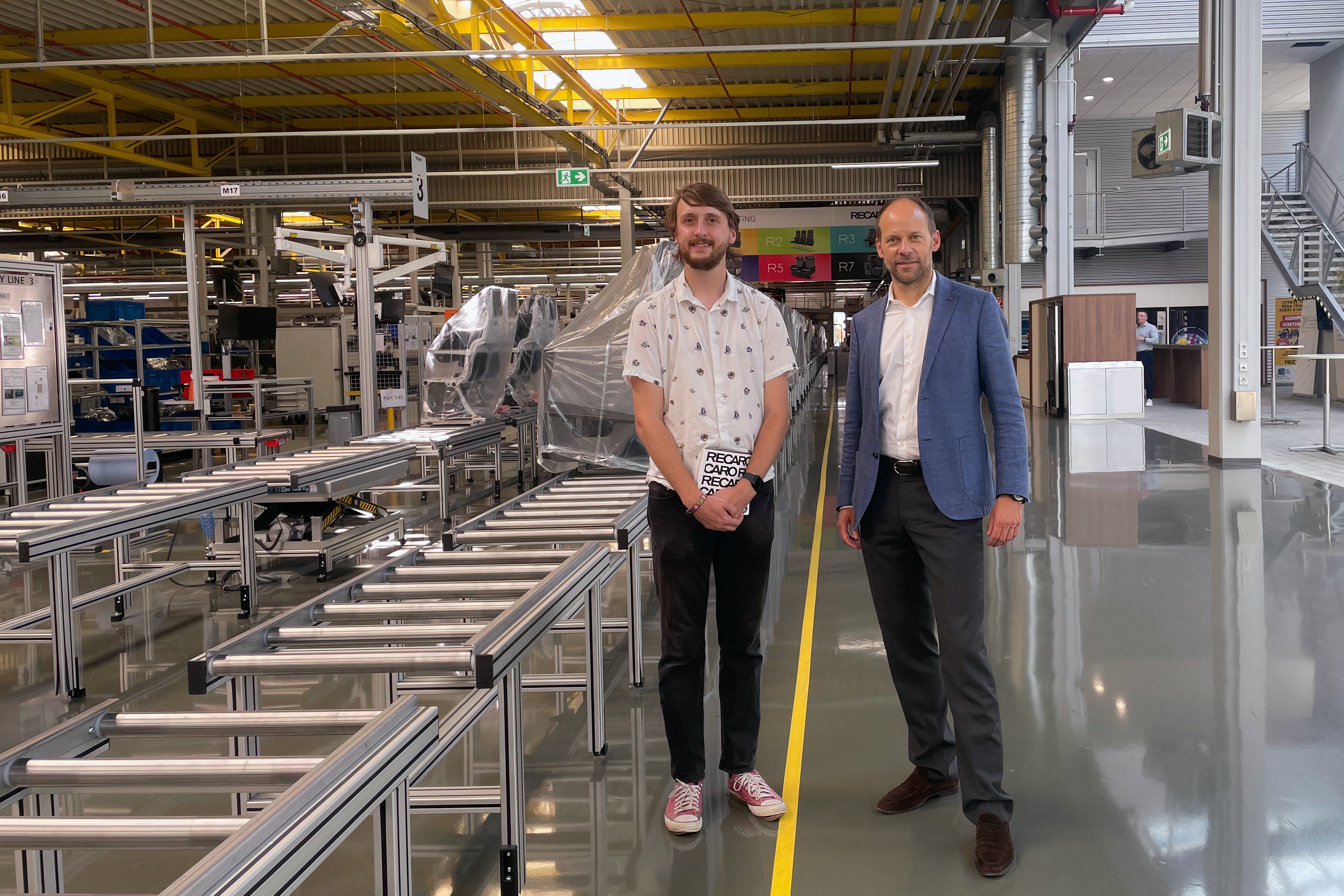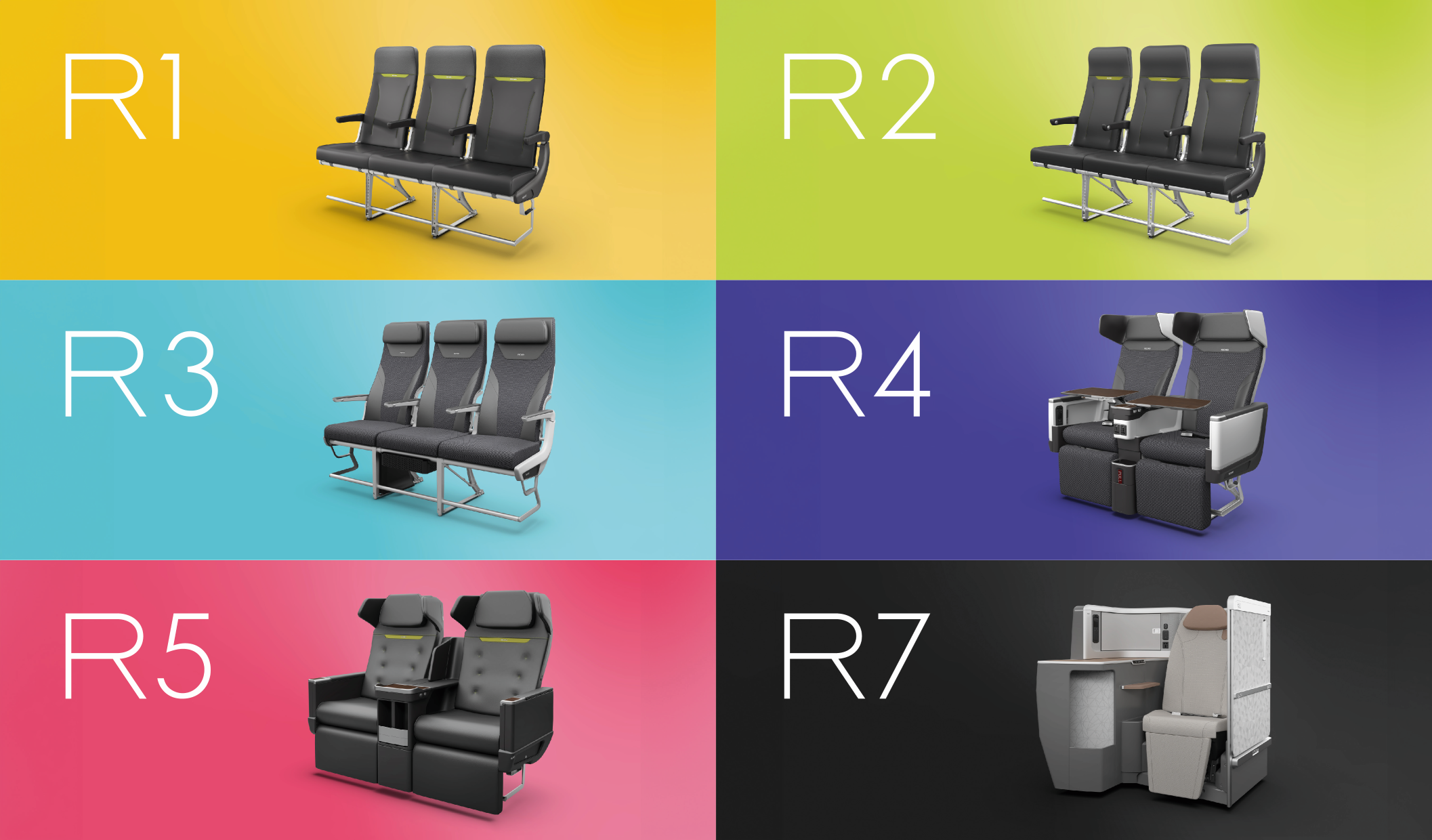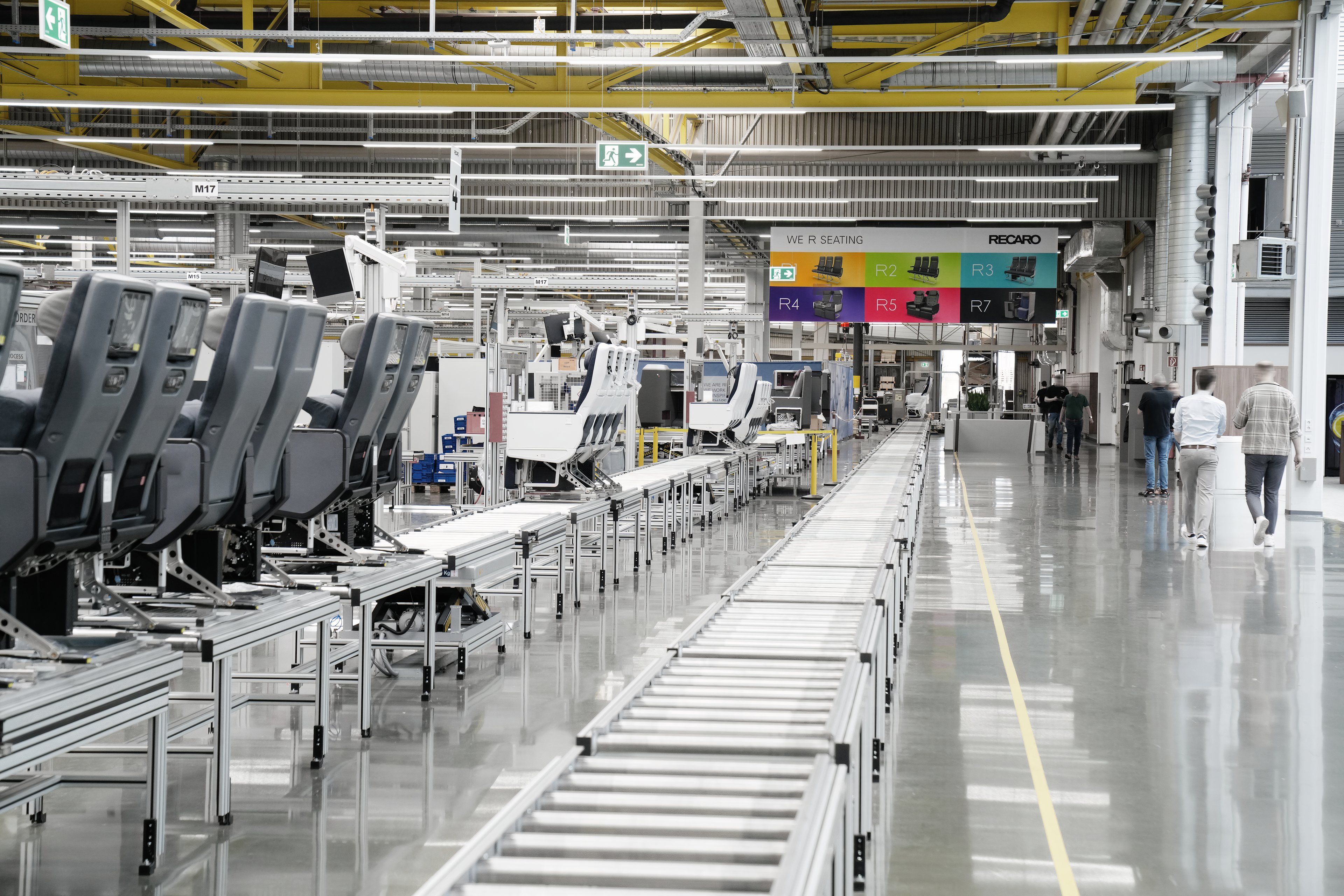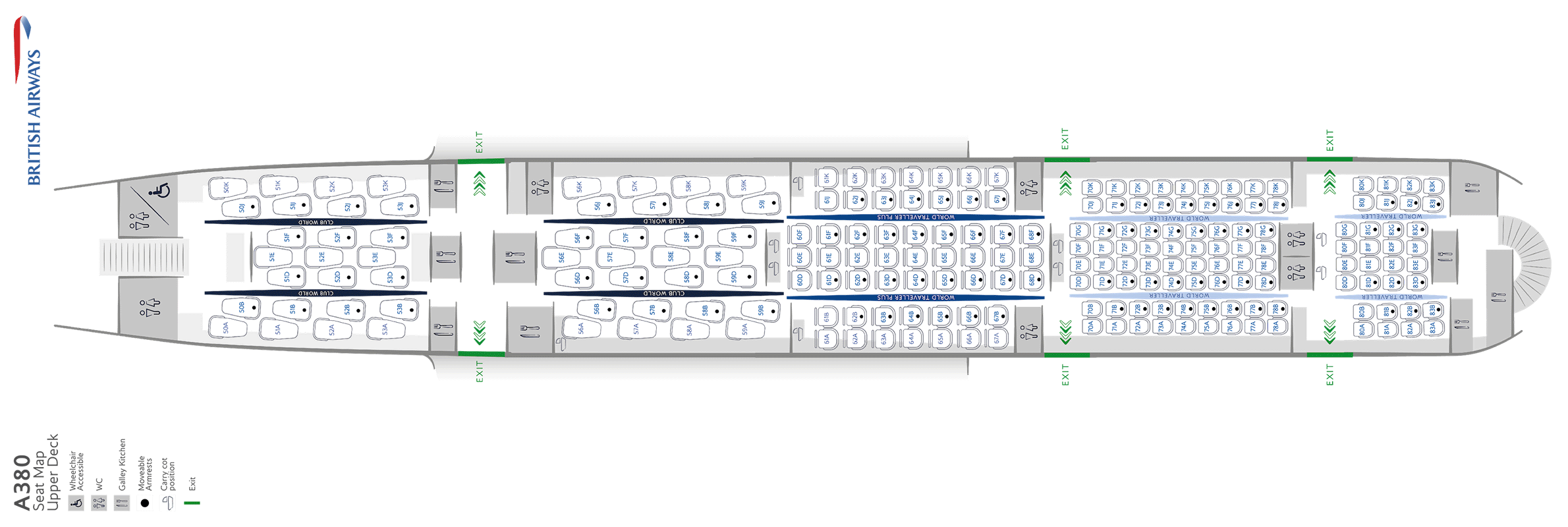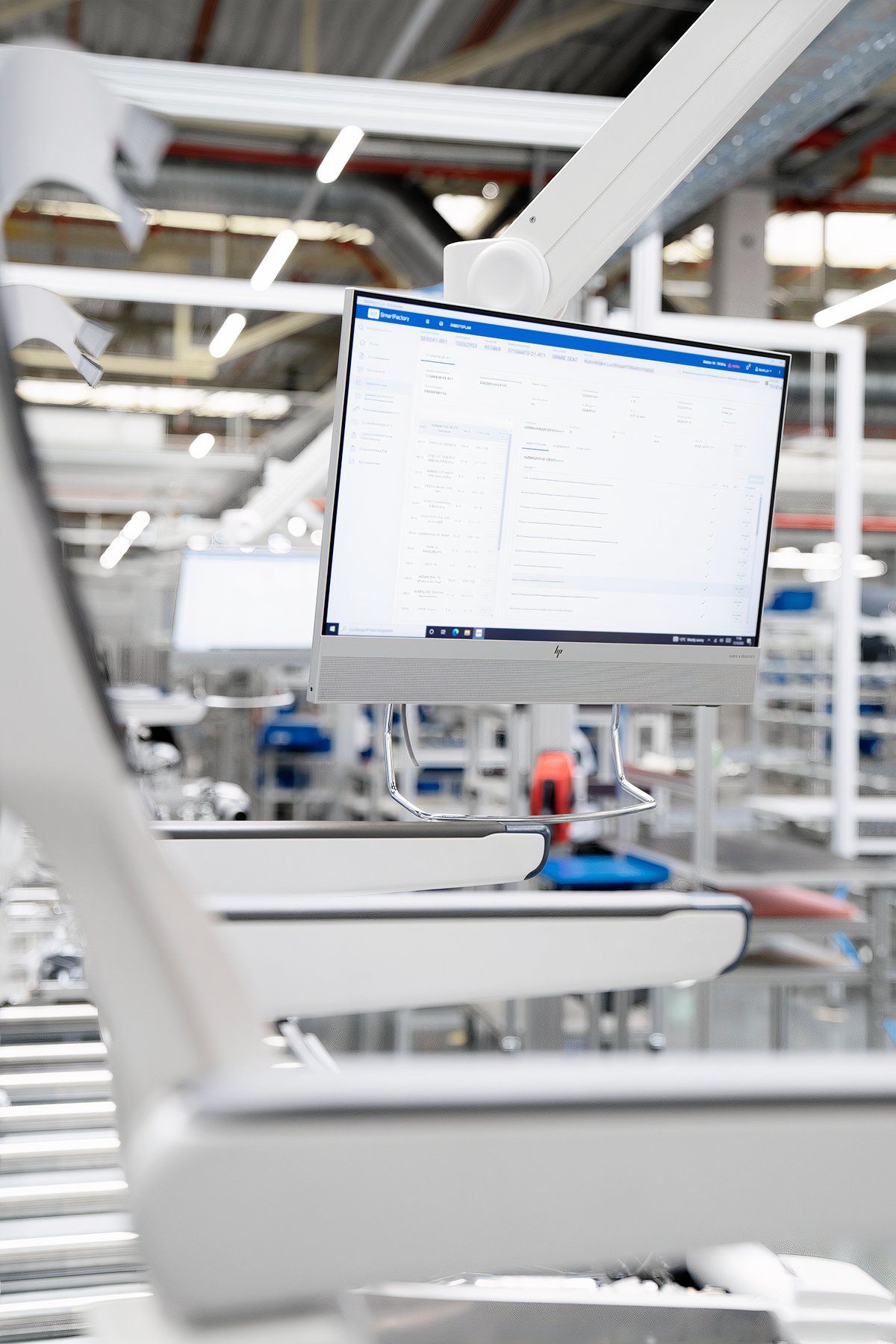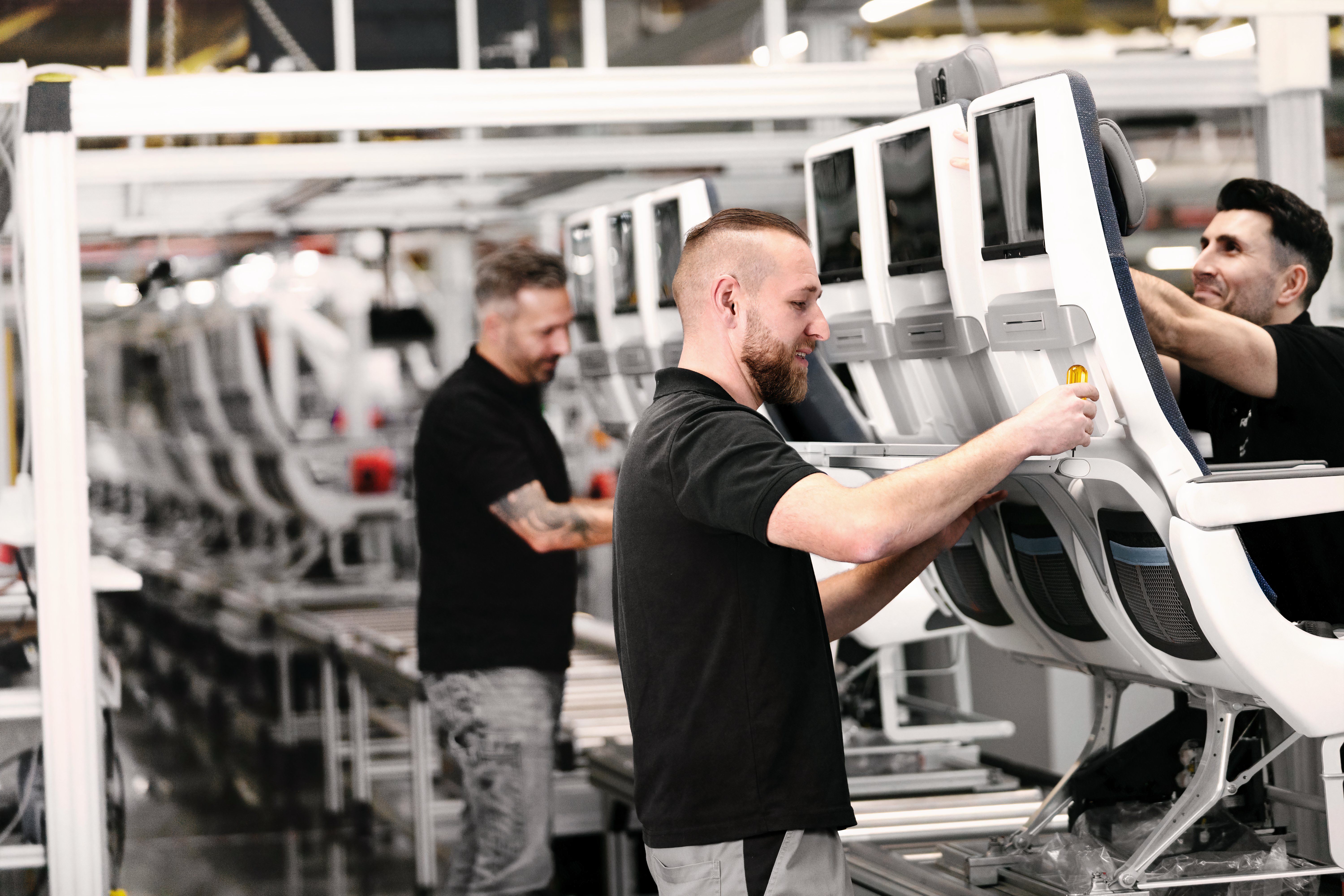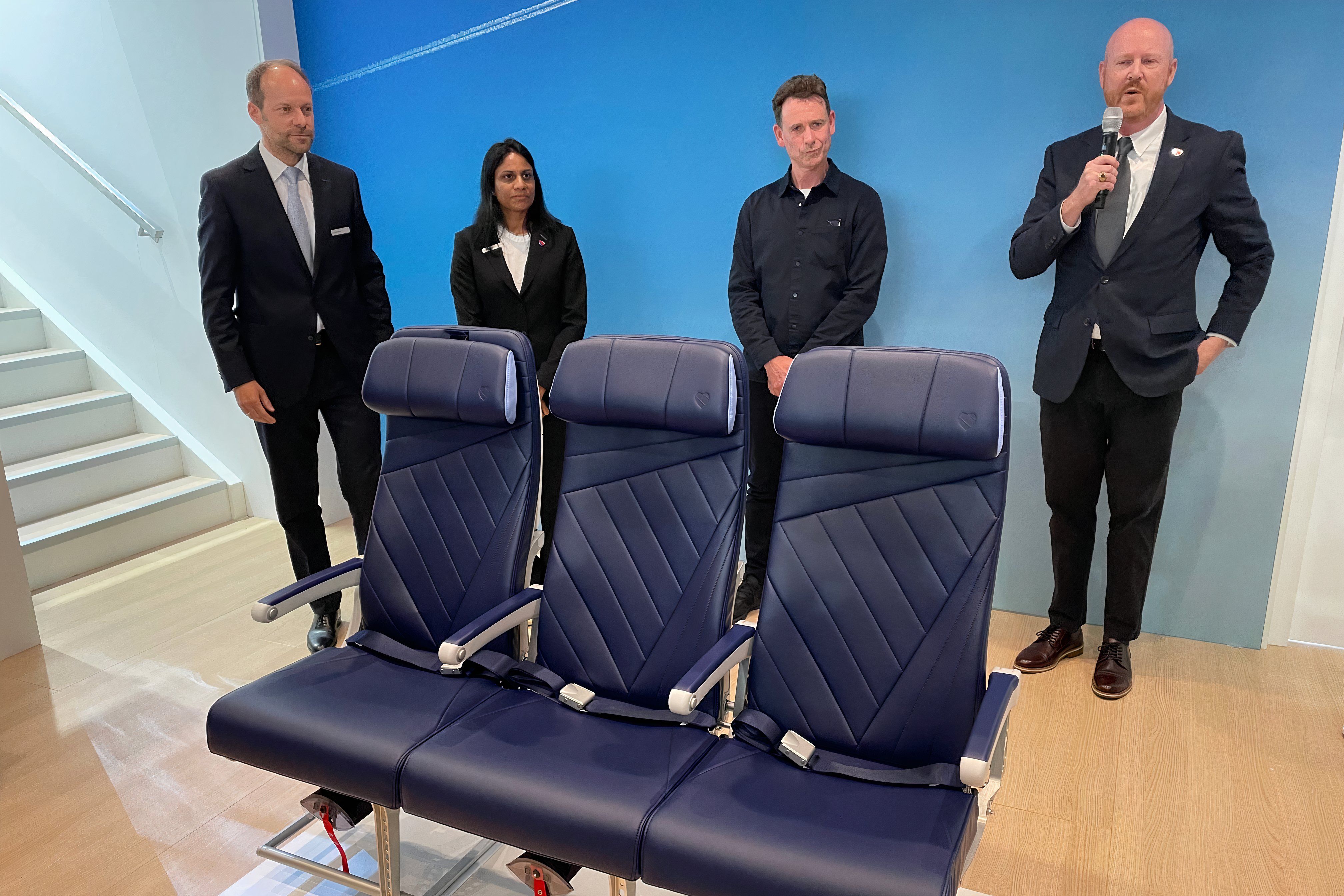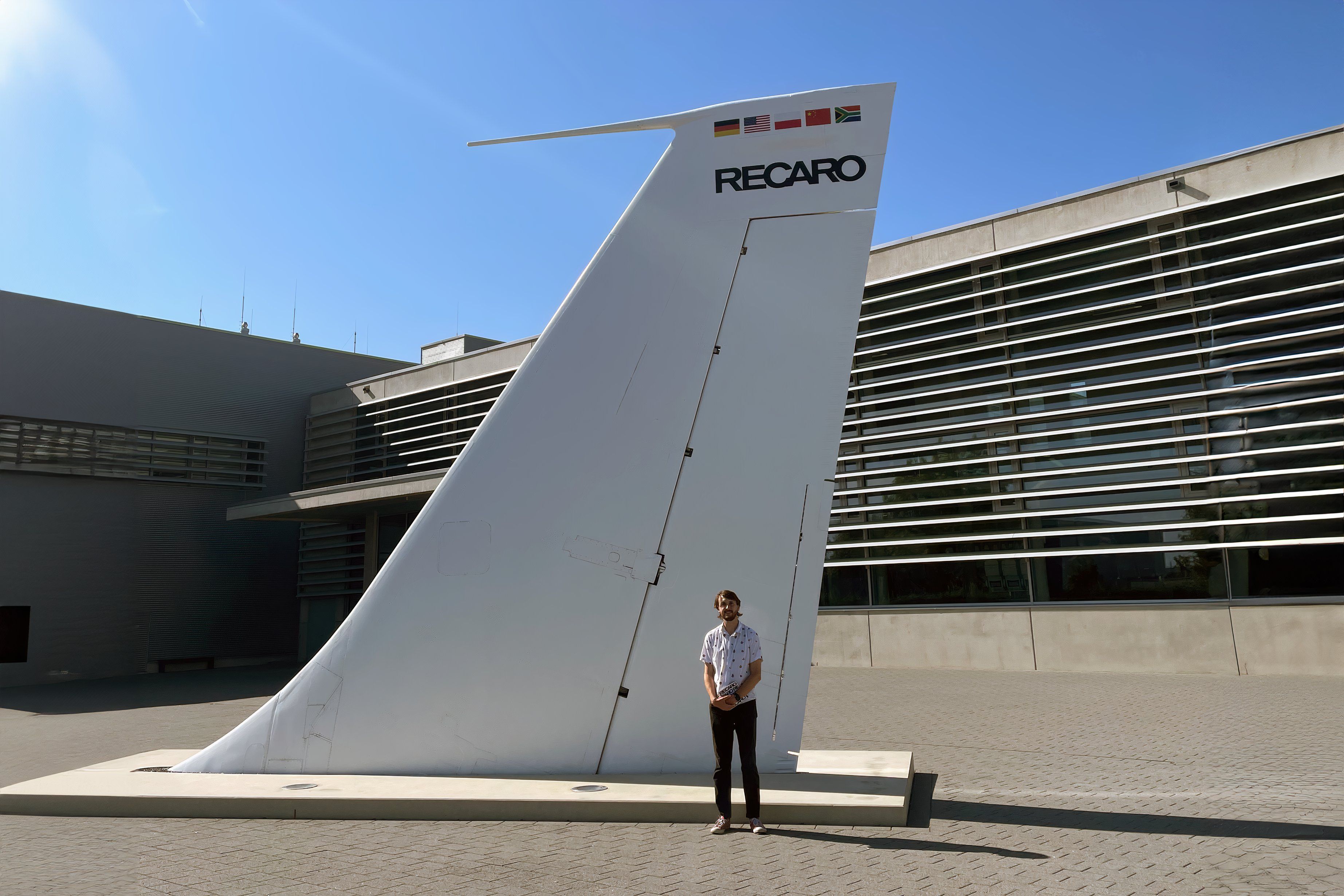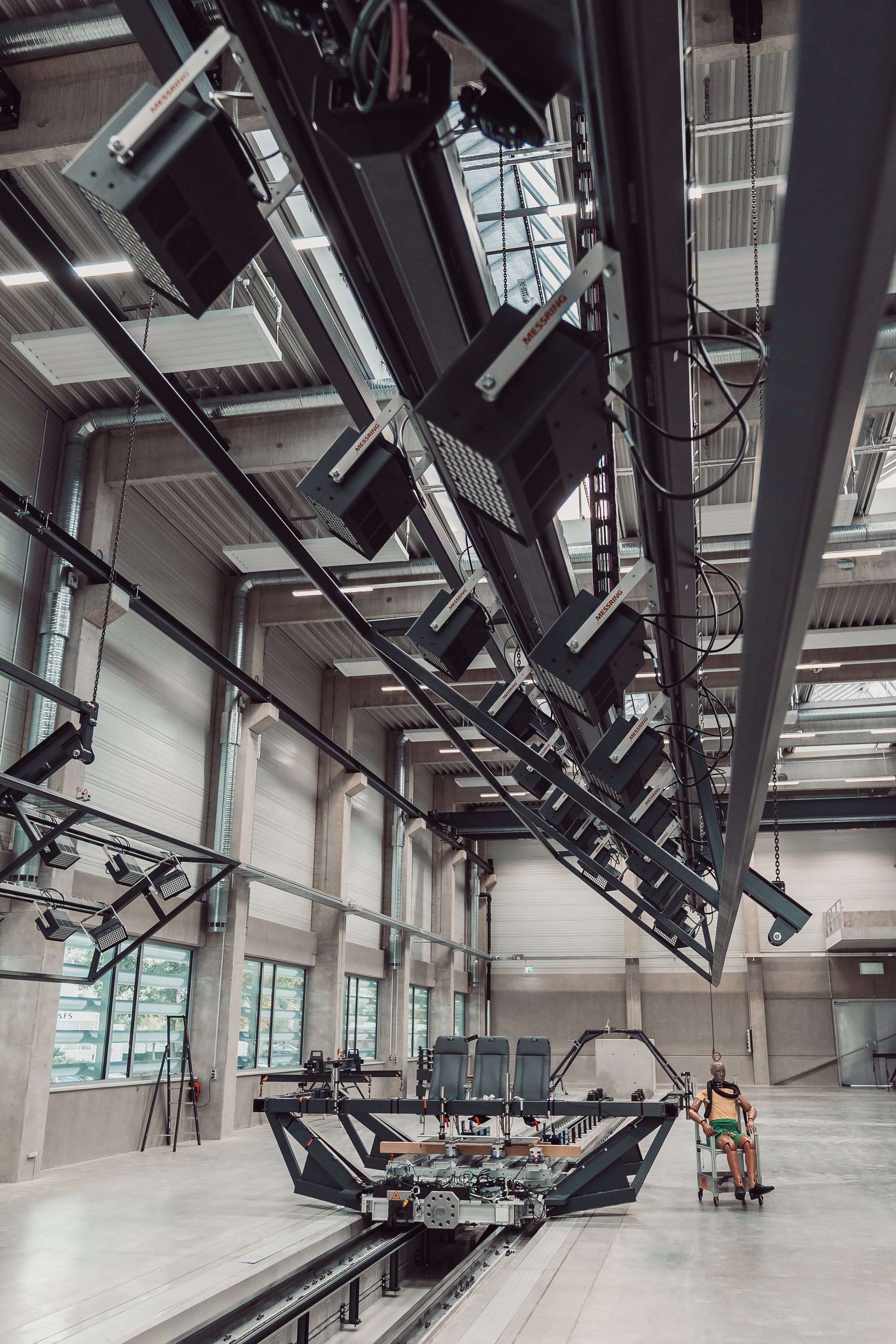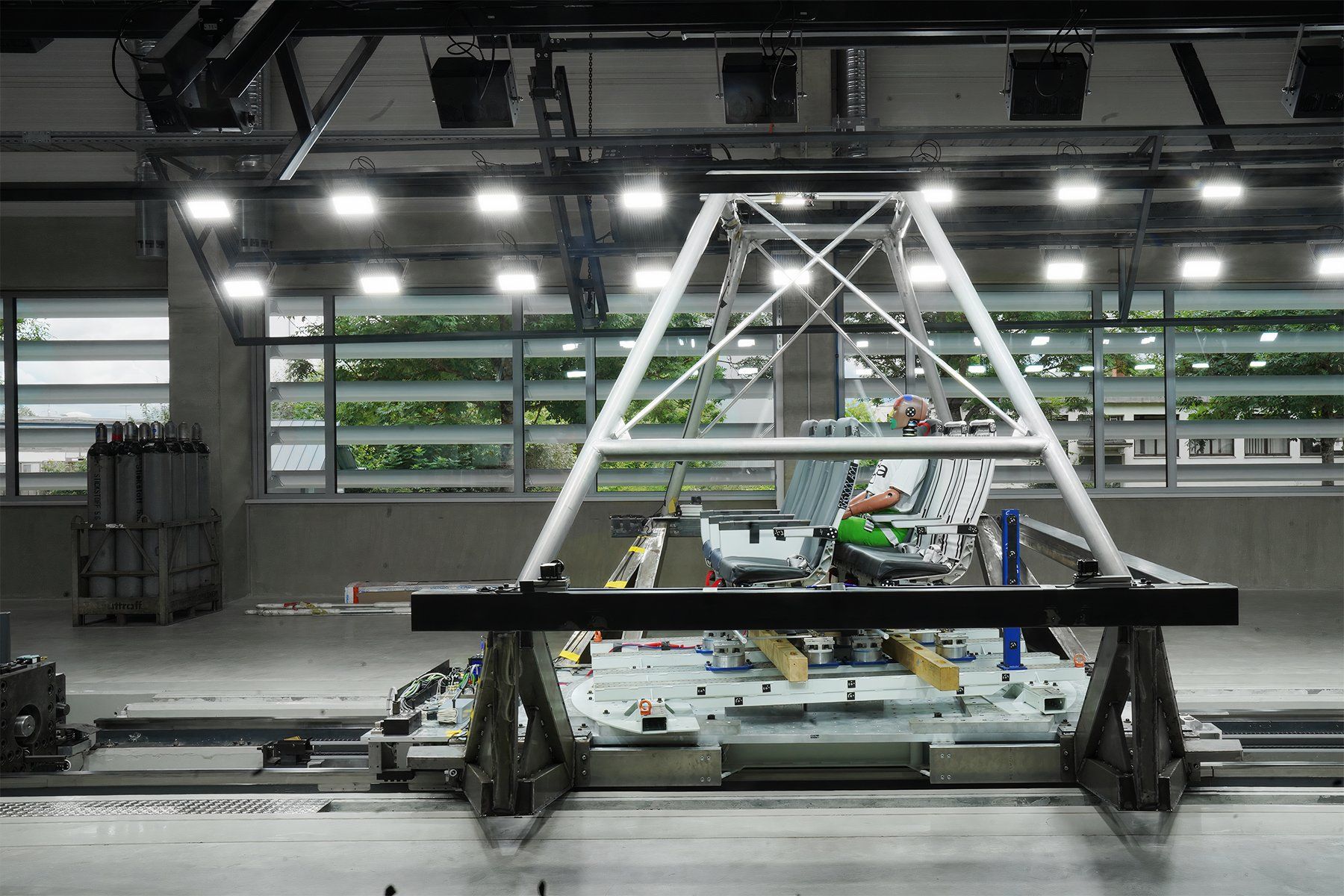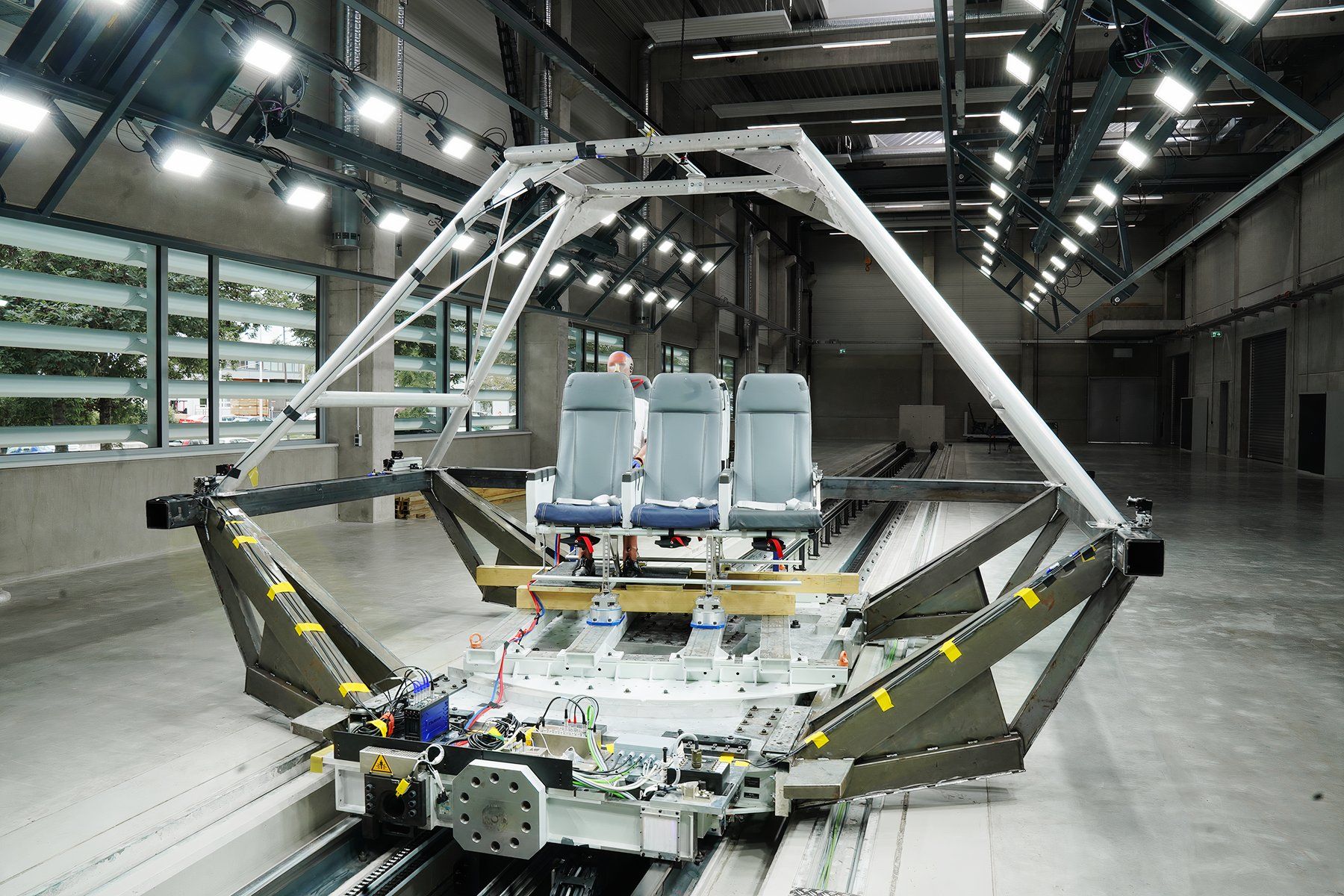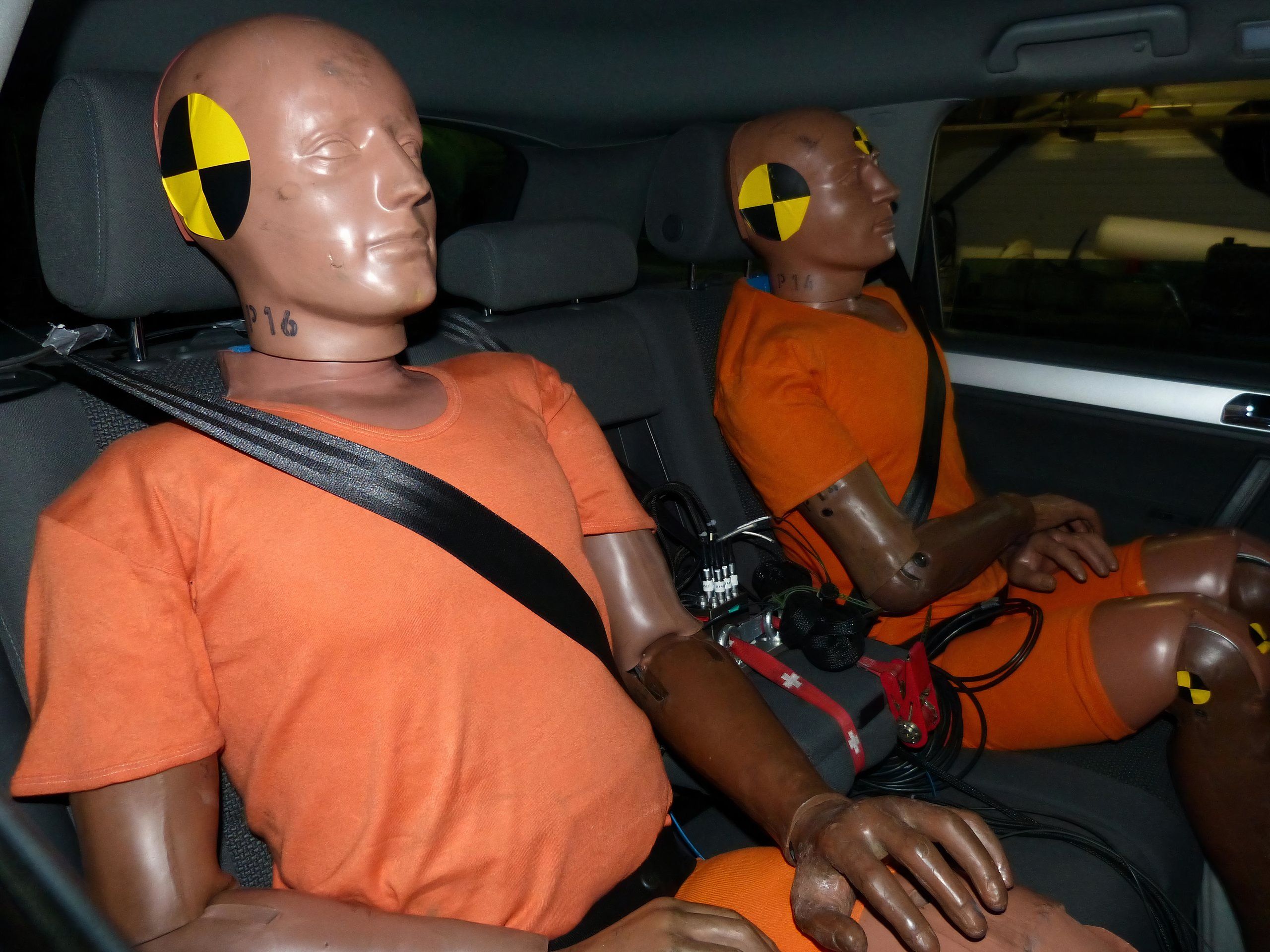You might not have heard of ![]() RECARO Aircraft Seating
RECARO Aircraft Seating
, but you have likely used one of its products. The company is one of the major players in the aircraft seating sector, supplying a wide range of airlines, from ![]() Alaska Airlines
Alaska Airlines
and ![]() American Airlines
American Airlines
to ![]() British Airways
British Airways
and ![]() Lufthansa
Lufthansa
.
RECARO Aircraft Seating is the primary division of the RECARO Group. The group also has divisions that create gaming, rail, and child safety seats, though its origins lie in the automotive sector. Simple Flying recently visited the company to meet with CEO Dr. Mark Hiller and tour the manufacturing and crash test facilities in Schwäbisch Hall, Germany.
Photo: Tom Boon – Simple Flying
A range of seating for every need
REACRO offers a wide range of seating options to fit the needs of different customers. Seating options include economy, premium economy, business class, and even seat solutions for Embraer’s E-Jets. The company’s main products are sequentially numbered.
RECARO Aircraft Seating
- Business Type
-
Seat Maker
- Date Founded
-
1971
- CEO
-
Dr. Mark Hiller
- Headquarters Location
-
Schwäbisch Hall, Germany
The company offers the R1, R2, and R3 in the economy seating range. The R4 and R5 are seats that you would expect to find in premium economy on a long-haul flight, while the R7 is a fully-fledged business class seat. Some seats sit outside the primary numbering system, such as the BL3530 economy seat and the CL6710 business class seat.
Photo: RECARO
Differing lead times for each model
Speaking to Simple Flying, Hiller revealed that each of REACRO’s products has a different lead time depending on its classification. A standard economy seat program lead time would be 10+ months. RECARO has cut this to 4-6 months for most of its seating programs.
However, the manufacturer keeps parts in stock for the BL3530 at all times, meaning that it can turn these around in a minimum of two months. Hiller revealed that this was handy during the Boeing 737 MAX issues, which saw many aircraft swapping hands and thus needing new interiors.
Exploring RECARO’s production process
Hiller took time out of his busy schedule to show Simple Flying around the main Schwäbisch Hall production plant along with Daniel Schmid, Head of Industrial Engineering & Logistics. The final assembly line operates with a single shift. When we stepped out onto the shop floor at around 16:00, this had already finished for the day. However, the production lines were still full of partially completed seats waiting to be picked up the next day.
Production sites around the world
RECARO has production sites strategically located around the world. The leading site remains Schwäbisch Hall in Germany, which specializes in completing complex seat designs and standard seats. There are also assembly lines in China, Poland, South Africa, and the United States of America. Each plays an essential role in production, with differing specialties. For example, the Chinese site will produce many seats for aircraft rolling off of Airbus’ Tianjin final assembly line.
Photo: Simple Flying
8 hours to build a seat set
Hiller and Schmid explained that there are six 43-meter-long final assembly lines at Schwäbisch Hall, each with 17 different modules. Each line operates with 20 employees, and the assembly of the seats is entirely manual. That is, there are no automated processes in the final assembly line. That even extends to moving seats down the production line. Employees push the seat to the next station when ready.
The process for constructing each product is naturally slightly different, but it would take around eight hours to make a single R3 ship set. This consists of around 30 minutes of construction time per station on the production line, along with a 30-45-minute test which will check the mechanisms and any electrics all work as intended.
Photo: RECARO
Speaking of electrics, RECARO installs IFE systems for many of the airlines that it works with. Hiller revealed that the company receives no revenue from the IFE systems. The airline buys the system directly from the supplier, which will be shipped to RECARO for installation as part of the production process. RECARO doesn’t charge extra for the installation.
Around half of each seat is customisable
You may wonder how much of a seat you can really customize while maintaining the same product. Surprisingly, around half of a seat is customizable. This includes everything from the IFE system to the cover fabrics and their colors, the tray tables, and even the storage options per seat.
But even if a customer has decided on a specific seat specification, there are even more customization options. Consider G-XLED, a British Airways Airbus A380
with 469 seats. According to fleet data from Cirium, this aircraft has 303 RECARO CL3510 economy seats in a 3-4-3 and 2-4-2 configuration, along with 55 PL3510 premium economy seats in a 2-3-2 configuration.
Photo: British Airways
RECARO will have created a huge number of variations of this one seat. Firstly, there is a set of four seats that fits in between the two aisles. This will have a separate bulkhead variation with fold-out IFE stored in the footwell and a tray table in the armrest. Meanwhile, the last row before a bulkhead will have no IFE or tray table stored in the backrest. Then you have row 24 on the main deck, which is missing a D seat, creating space for the crew rest area emergency exit, which will be its own variation.
Photo: British Airways
That’s before you even look at the left and right, which will each have the above variations for bulkheads. The side seats also need to exist as a set of three for the lower deck and a set of two for the upper deck. So far, we’ve seen at least 16 variations of the same seat. There could be even more.
Zero paper in the production line
Having so many different versions of a seat doesn’t have to be complex. Schmidt highlighted that the entire production process is now paperless. Each workstation along the production line has touch screens that can be used to pull up technical drawings and building instructions and record anything necessary for certification purposes.
Photo: RECARO
There are 45+ nationalities working for RECARO, and having digital documentation means they can be viewed in multiple languages. Every location has English and its local language. For example, the Chinese location has Chinese translations, and the Polish site has Polish translations. The company also wants to add Spanish at the Texas Fort Worth site.
Each set of seats has its own tracking number in the system and a barcode that follows it. Scanning this will quickly bring up everything relevant to that specific ship set.
Photo: RECARO
Shipping around the world
RECARO obviously tries to build seats closest to where they will be needed. For example, the Texas facility will primarily provide the new seating for  Southwest Airlines
Southwest Airlines
‘ fleet. However, each plant can work on seats for many customers.
Photo: Tom Boon | Simple Flying
At the end of each of the six production lines, a single line takes all the seats to the packing area. Here, they are boxed up before heading to their following destinations. A range of packaging is used depending on the destination. Reusable packaging and road transport are used to get to Airbus’ Finkenwerder site in Hamburg. We also saw seats destined for Delta Air Lines, which could travel via air freight or sea cargo.
Interestingly, Hiller highlights that sometimes airlines coordinate their own shipping with cargo space onboard their own aircraft. Taking Delta Air Lines as an example, completed seats could theoretically be loaded onto their transatlantic flights from Frankfurt, saving some shipping fees as they use their own cargo capacity.
Other production facilities
The final assembly lines aren’t the only production activities going on at RECARO’s Schwäbisch Hall facility. In fact, the Final Assembly Lines only seem to take up around half of the floor space in the giant warehouse.
Creating parts for seats in-house
Some of the parts that RECARO uses to build a ship set will be supplied externally. However, a good portion of them are created onsite. The part production facility is split into two sections. One works with metal, while another works with plastic.
On the metal side, workers may take a large sheet of metal and laser cut it into the shapes needed to create parts, optimizing for minimal waste. The 2D shapes may then be hand-folded to the correct 3D shape or placed into a press. On the plastic side, sheets might also be fed into a machine that will heat the plastic before using a vacuum and a mold to shape it as appropriate.
While only a single shift works on the final assembly line, two to three shifts are working on producing individual parts at RECARO.
Building bespoke test seats
There is also a separate workshop that is like a mini final assembly line. Here, seats are built that will be used on the company’s crash test facilities. These seats are built away from the main assembly lines, and a single worker will work on an entire test seat from start to finish. Since RECARO conducts around three crash tests daily, this isn’t a quiet and occasionally used part of the workshop.
A separate crash test facility
The company’s relatively new crash test facility is across the road from the production facility in Schwäbisch Hall. There is already a surprise for aviation fans before you get inside. Standing at eight meters tall and weighing around 900 kilograms sits the tail of D-ABOD, a former Lufthansa Boeing 707 that used to reside at Hamburg Airport.
Photo: Tom Boon – Simple Flying
The aircraft was scrapped in 2021, and various parts, including the cockpit, were auctioned off to private collectors. In June 2021, the tail of the aircraft was detached and brought to Schwäbisch Hall to act as a centerpiece for the new facility.
Three tests a day
As mentioned above, the crash test facility conducts up to three daily tests, adding up to around 400-500 annual tests. Construction began on the building in 2019, and it had only been intended for around 200 tests a year at the time, according to Jürgen Kammerer, Head of Stress & Testing.
The crash test facility has seven platforms that can be loaded onto the sled. This allows setup to take place off of the rig itself, meaning one experiment can be built while another is underway. Four to five of these are constantly rotating.
Photo: RECARO
All in the blink of an eye
Unfortunately, no tests took place during our visit, but it sounds like we didn’t miss much. The test platform takes 90 milliseconds to reach 16G, accelerating up to 40 kilometers per hour (25mph). Impressively, Kammerer reveals that the RECARO test sled accelerates 15 times faster than a Formula 1 test sled.
We watched back some sample tests that had been recorded in real speed and in slow motion. The cameras used to measure the tests take frames at one-millisecond intervals (there are 1,000 milliseconds in a normal second!)
Photo: RECARO
However, cameras are not the only way to see the impact of a crash test. Some tests also use a much more old-school method of placing different coloured paints on different parts of the body to look at where they are deposited on the seat in front.
But why are so many tests needed?
With aircraft seats, it is not as simple as a product line being certified, so it’s good to go. Every customer has their own product with varying differences (remember, up to 50% of a seat is customizable). Each of these product variants needs to be tested.
For an Airbus A321neo
seat, there could be between 10 and 15 tests, but for an Airbus A380, as many as 30-35 tests could be required. It’s not just the high-octane speed tests that are required. There is also drop testing and static tests such as fire suppression.
Photo: RECARO
A surprising number of rules
There are actually a surprising number of rules that need to be followed when conducting tests. Firstly, different types of dummies are placed onto the crash sleds. The first type of dummy is called a Hybrid II dummy (pictured below). It is slightly cheaper as it is less sophisticated and is essentially just a weighted body-shaped dummy. According to the Humanetics Group, Hybrid II dummies have a range of motion, weight, and center of gravity developed from studies of humans. RECARO is also making use of the Hybrid III dummy, which is more sophisticated and thus more costly for some tests.
Photo: Dynamic Test Center, AGU Zürich
The dummies themselves must meet a fairly specific dress code. The dummies are made to wear a type of shoe used by the United States military. Interestingly, Kammerer points out that the grip is so good on the soles of the shoes, that they have to cover them with tape to allow the legs to fly forward during the crash test. The dummies are also required to wear cotton shirts for the tests.
No female dummies to be seen
Only males and children are used for the tests. Given that the male dummies are expected to be heavier than the average female, the damage a female would sustain in a test would theoretically be less. However, female crash test dummies have simply not entered wide use yet, with Forbes reporting the first automotive study with a female crash test dummy only took place in 2022.
Speaking of automotive tests, the aerospace industry uses automotive dummies for testing. Given there is much more demand for automotive dummy testing, they remain the standard. Kammerer does point out that aerospace dummies are not living their best lives. The automotive dummies are designed to be used with car airbags, meaning that they are subjected to much more damage within the aerospace industry. Thankfully, as the crash test dummy is standardized, it is possible to replace individual components. There is a shelf of heads in varying states of wear waiting to be substituted onto a body if needed.


